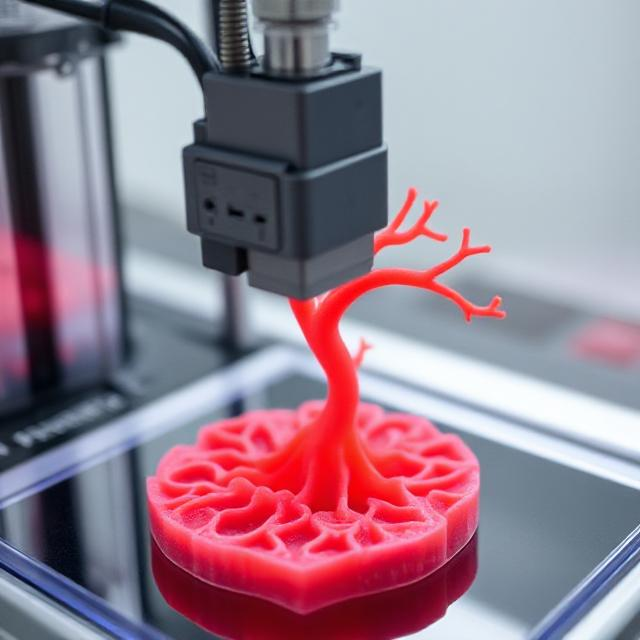The landscape of cancer treatment is undergoing profound change driven by innovative technologies. Among these, 3D bioprinting emerges as a revolutionary tool poised to redefine personalized medicine, particularly in oncology. This blog post explores how 3D bioprinted cancer models can accelerate the development of personalized therapies and how this advancement aligns with broader trends in biotech, proteomics, and immunotherapy.
Understanding the Potential of 3D Bioprinting in Cancer Research

3D bioprinting involves creating complex biological structures layer by layer, integrating living cells within specialized “bioinks.” This approach has allowed scientists to engineer tissues closely mimicking human physiology, offering significant advantages over traditional two-dimensional cell culture systems, which fail to capture the complexities of real human tumors.
A landmark study led by Jinah Jang from Pohang University and Charles Lee from The Jackson Laboratory has demonstrated the capability of this technology by developing 3D bioprinted gastric cancer models. These models retain the original characteristics of patient-derived tumors, enabling precise prediction of individual drug responses within just 14 days of tissue extraction. This rapid, accurate prediction capability represents a significant step forward compared to traditional methods, drastically shortening the timeline required to understand a patient’s unique cancer biology and responsiveness to therapies.
The Clinical and Commercial Implications
This breakthrough aligns with broader market forecasts predicting rapid growth in the 3D bioprinting sector, particularly in human tissue applications. Market analysis suggests the USA’s 3D bioprinted human tissue market alone is expected to reach approximately USD 776 million by 2035, indicating significant commercial and clinical interest.
Such growth is not merely about economics—it represents a fundamental shift towards patient-specific treatments. For cancer, a disease highly varied across patients and even within a single tumor, personalized models could dramatically improve outcomes by ensuring each patient receives a therapy tailored precisely to their tumor’s molecular and genetic profile.
How 3D Bioprinting Complements Advances in Proteomics
The parallel advancements in proteomics are crucial in this context. Companies like Nautilus Biotechnology, headquartered in Seattle, are revolutionizing our understanding of the human proteome, democratizing access to complex protein analysis. Proteomics—the large-scale study of proteins—plays an essential role in oncology by uncovering biomarkers and molecular targets that define cancer progression and treatment resistance.
By integrating advanced proteomic data with 3D bioprinted tumor models, researchers can gain unprecedented insights into tumor biology. This combination allows for the exploration of specific protein expression patterns unique to each patient’s cancer, leading to better-targeted therapeutics and biomarker-driven clinical trials.
The Intersection of 3D Bioprinting and Immunotherapy
Another powerful development in oncology is the advancement of immunotherapies, especially cytokine-based therapies. Mural Oncology exemplifies this progress by leveraging protein engineering to develop novel cytokine treatments, such as their lead candidate nemvaleukin alfa, currently under evaluation for ovarian cancer and mucosal melanoma. Such innovative approaches highlight how targeted immune therapies are becoming central to personalized medicine strategies.
Incorporating 3D bioprinted cancer models into immunotherapy development could further enhance treatment precision. By evaluating immune response in patient-specific tumor models, researchers can fine-tune immunotherapies, significantly improving treatment outcomes and minimizing adverse reactions.
The Challenges and Opportunities Ahead
Despite these promising developments, challenges remain. Bioprinted tissues must achieve greater complexity, integrating not just tumor cells but also immune cells, stromal cells, and vascular structures to closely replicate human tumor microenvironments (TME). Accurate replication of the TME is critical since this complex ecosystem significantly influences how tumors respond to therapies, particularly immunotherapies.
Additionally, regulatory hurdles and scalability remain significant considerations. While regulatory frameworks are evolving rapidly to accommodate these innovative technologies, ensuring the reproducibility, safety, and clinical applicability of bioprinted models remains a priority.
However, these challenges also present substantial opportunities. Companies and academic institutions investing in refining 3D bioprinting technology stand to become leaders in the next wave of biomedical innovation. Collaboration between sectors such as proteomics, bioengineering, immunotherapy, and regulatory bodies is crucial for realizing the full potential of personalized medicine.
Real-world Impact: Transforming Patient Outcomes
The ultimate value of advancements in 3D bioprinting and associated technologies lies in their potential to revolutionize patient care. Imagine a future where, shortly after cancer diagnosis, a patient’s tumor tissue is bioprinted into multiple models. These models are then rapidly screened with various therapies—chemotherapy, targeted therapies, or immunotherapies—to identify the most effective personalized treatment regimen. Such capabilities would drastically improve survival rates, reduce side effects, and eliminate ineffective treatments.
Early signs from studies, such as the gastric cancer model research mentioned earlier, suggest this future is not far off. The capacity to predict patient-specific drug responses quickly and accurately could make personalized oncology treatment the standard of care within the next decade.
Conclusion: A New Frontier in Personalized Medicine
3D bioprinting represents a pivotal advancement in the ongoing transformation of oncology, fundamentally shifting treatment strategies towards personalized medicine. Combined with innovations in proteomics and immunotherapy, bioprinted models offer unprecedented opportunities for precise, effective, and rapid cancer care.
As researchers, clinicians, and biotechnology companies continue pushing the boundaries of what’s possible, the future of oncology promises not just improved treatments, but treatments tailored uniquely to each individual. The promise of personalized medicine—once theoretical—is swiftly becoming reality, driven by the remarkable potential of 3D bioprinting.
